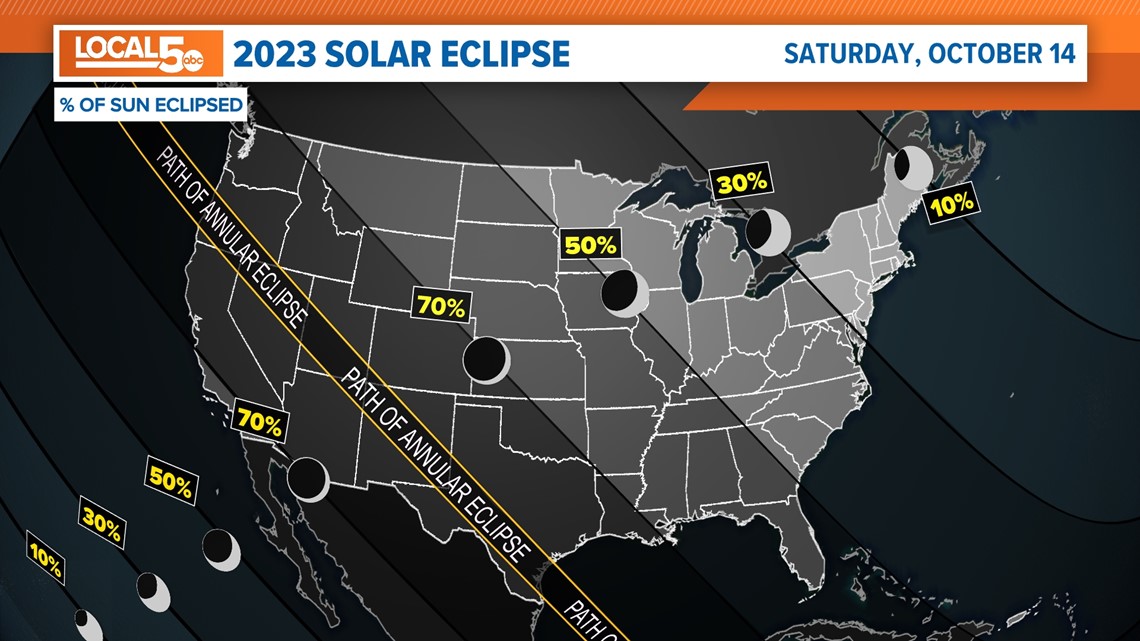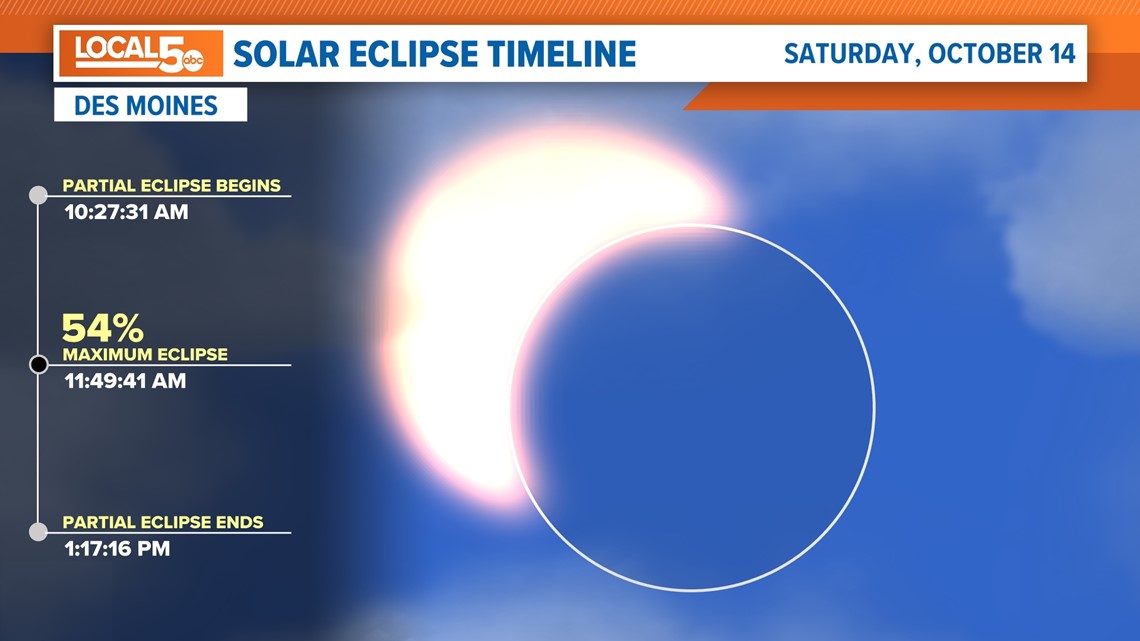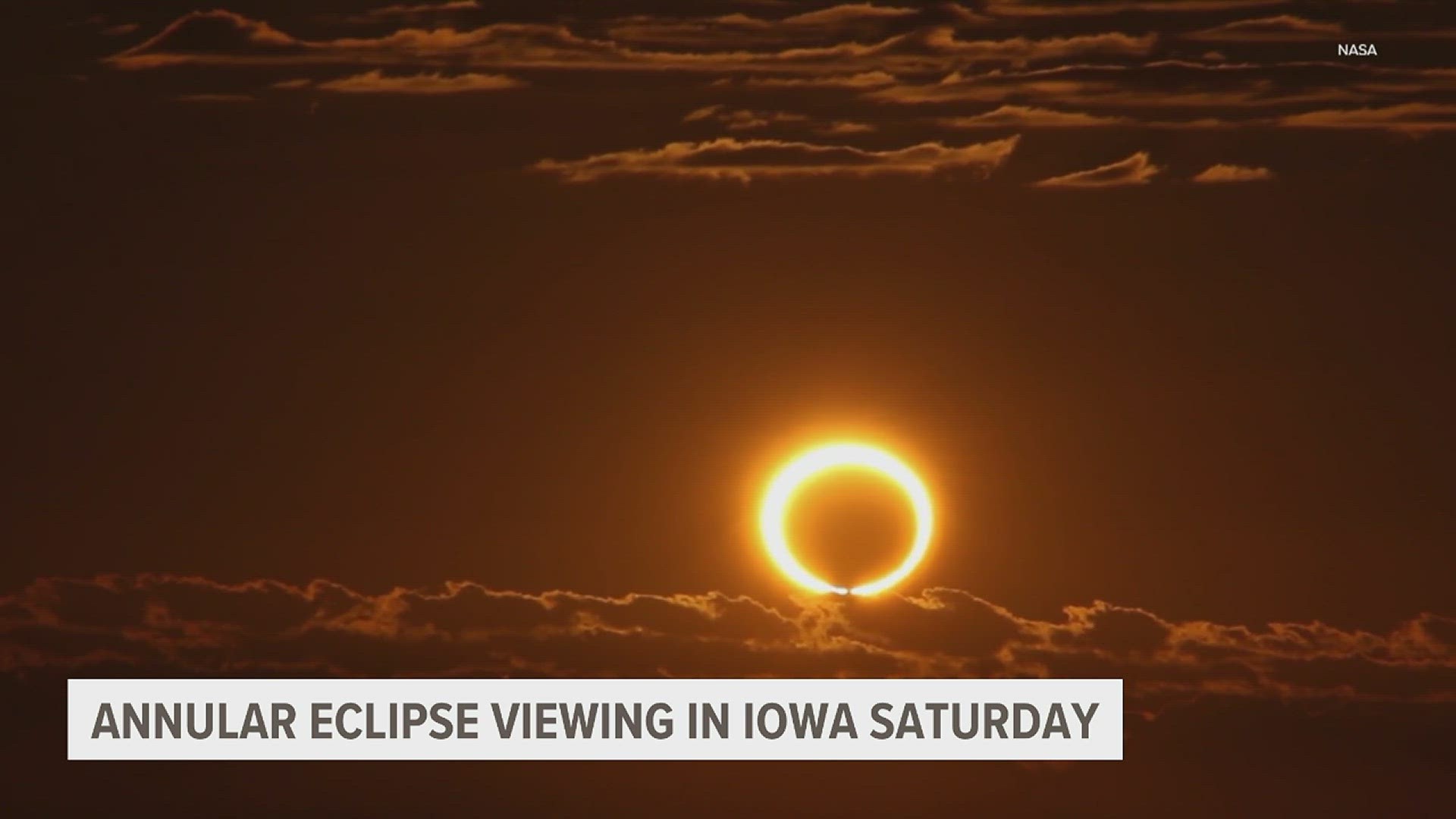DES MOINES, Iowa — Remember those nifty solar eclipse glasses everyone sported back in 2017? It's time to dig them out again, or at least buy a new pair.
An annular solar eclipse will cross North, Central, and South America on Saturday, Oct. 14. This won't be quite the same as the total solar eclipse in August 2017, but it is still exciting and rare.
According to NASA, an "annular solar eclipse happens when the Moon passes between the Sun and Earth while it is at its farthest point from Earth."
Since the Moon is farther away from Earth, it won't completely cover the Sun like what happens in total solar eclipses. Instead, NASA says it creates "a 'ring of fire' effect in the sky."
This year's annular eclipse will start in the United States, beginning along the coast of Oregon before traveling down to the Texas Gulf Coast.
Full visibility is expected in Oregon, Nevada, Utah, New Mexico and Texas. Some parts of California, Idaho, Colorado, and Arizona will also experience full visibility.
NASA says the eclipse will then pass over Mexico, Belize, Honduras, and Panama before traveling through Colombia and ending off the coast of Natal, Brazil, in South America.


Will the annular eclipse be visible in Iowa?
In short: yes.
We will only see a partial eclipse here, though.
Cities like Des Moines, Fort Dodge and Ottumwa, for example, will see roughly 50-55% of the maximum eclipse. Instead of seeing a full "ring of tire" look in the sky, Iowans will see the Moon slicing into just a portion of the sun.
Of course, seeing the eclipse is fully dependent on weather factors like cloud cover and precipitation.
While the exact start time and end time for the annular eclipse will vary from town to town, it will begin close to 10:30 a.m. on Oct. 14 for most areas. It will end by 1:30 p.m. that day.
In Des Moines, the partial eclipse will begin precisely at 10:27:31 a.m. and will end at 1:17:16 p.m.
The peak of the eclipse here — 54% of maximum — will occur at 11:49:41 a.m.


How can I watch the eclipse?
Similar to a total solar eclipse, it is not safe to look directly at the sun during an annular eclipse. You will need specialized eye protection for solar viewing.
As Heather Futrell, an eclipse expert with NASA says: "Your normal sunglasses do not work. Do not use them."
You can purchase "eclipse glasses" or a safe handheld solar viewer to enjoy the annular eclipse.
Whatever you buy should comply with the ISO 12312-2 international standard.
NOTE: NASA does not approve any particular brand of solar viewers on their own.
There a variety of sites online where you can purchase eclipse glasses for a relatively low price.
"Eclipse glasses are NOT regular sunglasses; regular sunglasses, no matter how dark, are not safe for viewing the Sun," NASA explained.
You should also refrain from using a camera lens, telescope or binoculars while wearing eclipse glasses or using a handheld solar viewer.
The sun's concentrated rays can cause serious eye injury.
"You put them on when you're looking away from the sun, and then you look up with your glasses," Futrell said. "And then when it's completed or you're done looking, you put your face back down away from the sun and you remove your glasses."
There are also options for making a safe viewer at home, like the ones NASA demonstrates here.
Other ways to watch
If you aren't able to secure safe eclipse glasses before the annular eclipse, there are other ways to see it.
NASA will host a livestream on YouTube from 10:30 a.m. to 12:15 p.m. CT on Saturday, Oct. 13. They will have NASA experts on hand, as well as live feeds of the eclipse from various telescopes.
Closer to home, there are a few events happening in Des Moines.
- The Science Center of Iowa will host a free Solar Eclipse Viewing Party from 9:30 a.m. to 12:30 p.m.; it will be held outside the building on the northeast corner of the property.
- Drake University's Municipal Observatory also plans to open up for the eclipse on October 14th, weather permitting.

